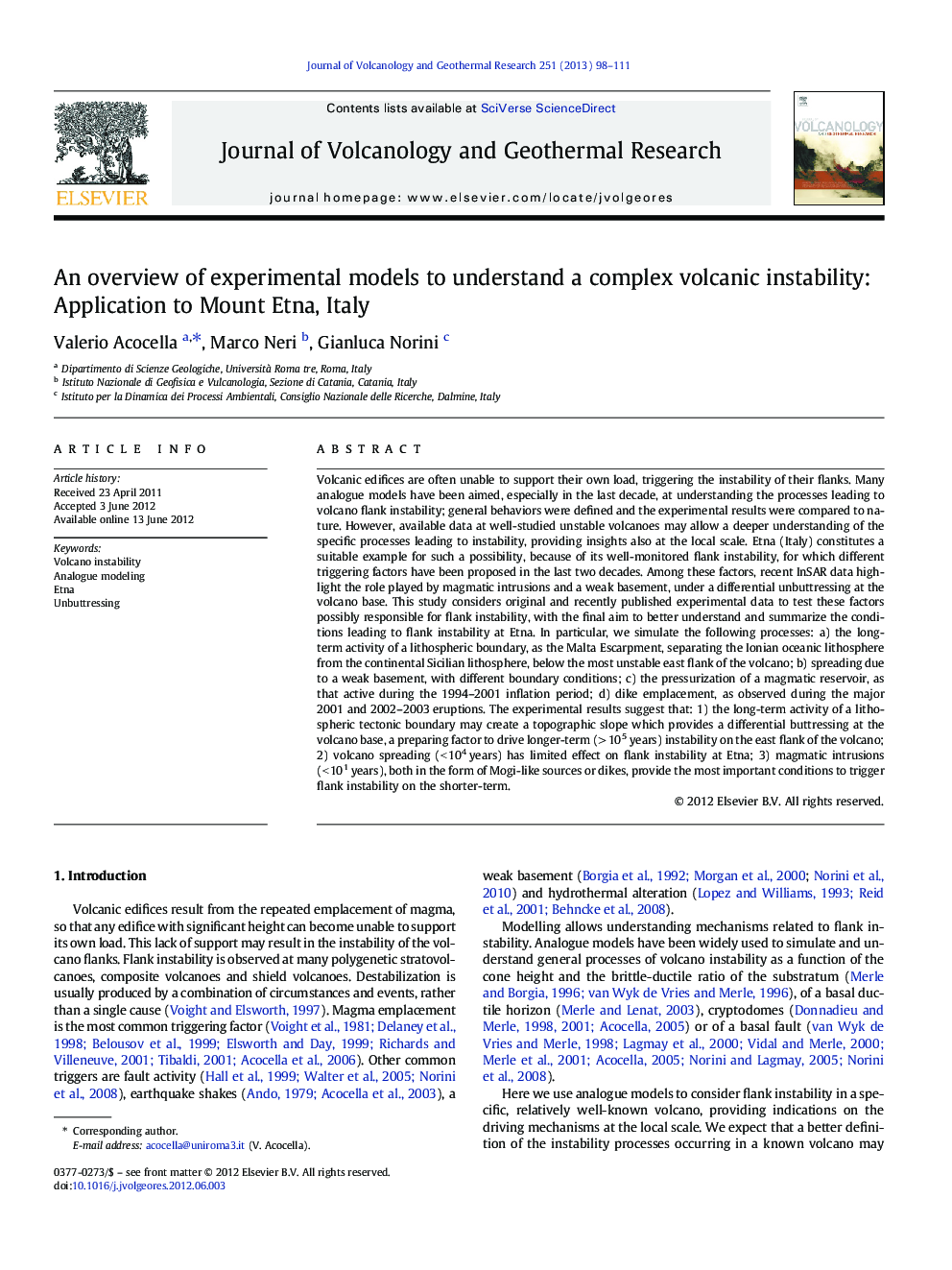| کد مقاله | کد نشریه | سال انتشار | مقاله انگلیسی | نسخه تمام متن |
|---|---|---|---|---|
| 4713203 | 1638370 | 2013 | 14 صفحه PDF | دانلود رایگان |

Volcanic edifices are often unable to support their own load, triggering the instability of their flanks. Many analogue models have been aimed, especially in the last decade, at understanding the processes leading to volcano flank instability; general behaviors were defined and the experimental results were compared to nature. However, available data at well-studied unstable volcanoes may allow a deeper understanding of the specific processes leading to instability, providing insights also at the local scale. Etna (Italy) constitutes a suitable example for such a possibility, because of its well-monitored flank instability, for which different triggering factors have been proposed in the last two decades. Among these factors, recent InSAR data highlight the role played by magmatic intrusions and a weak basement, under a differential unbuttressing at the volcano base. This study considers original and recently published experimental data to test these factors possibly responsible for flank instability, with the final aim to better understand and summarize the conditions leading to flank instability at Etna. In particular, we simulate the following processes: a) the long-term activity of a lithospheric boundary, as the Malta Escarpment, separating the Ionian oceanic lithosphere from the continental Sicilian lithosphere, below the most unstable east flank of the volcano; b) spreading due to a weak basement, with different boundary conditions; c) the pressurization of a magmatic reservoir, as that active during the 1994–2001 inflation period; d) dike emplacement, as observed during the major 2001 and 2002–2003 eruptions. The experimental results suggest that: 1) the long-term activity of a lithospheric tectonic boundary may create a topographic slope which provides a differential buttressing at the volcano base, a preparing factor to drive longer-term (> 105 years) instability on the east flank of the volcano; 2) volcano spreading (< 104 years) has limited effect on flank instability at Etna; 3) magmatic intrusions (< 101 years), both in the form of Mogi-like sources or dikes, provide the most important conditions to trigger flank instability on the shorter-term.
► This study provides an overview of the factors responsible for flank instability at Etna.
► Differential buttressing conditions provide a crucial factor to prepare instability.
► A weak basement may be a viable, though limited, mechanism to have flank instability at Etna.
► Pressurized reservoir or dike emplacement may trigger or enhance flank instability on the least buttressed side.
Journal: Journal of Volcanology and Geothermal Research - Volume 251, 1 February 2013, Pages 98–111